1. Chernobyl / Pripyat, Ukraine

Walking through Pripyat today feels like stepping into a post-apocalyptic dream. After the Chernobyl nuclear disaster in 1986, people had to leave in a hurry, leaving behind schools, homes, and playgrounds. Over the decades, trees have burst through concrete, wild animals including abandoned dogs roam the empty streets, and moss carpets the floors. Radiation keeps humans away, but nature, undeterred, has made this city its own, showing how quickly the wild can return when people disappear. Source: nationalgeographic.com
2. Hashima Island, Japan
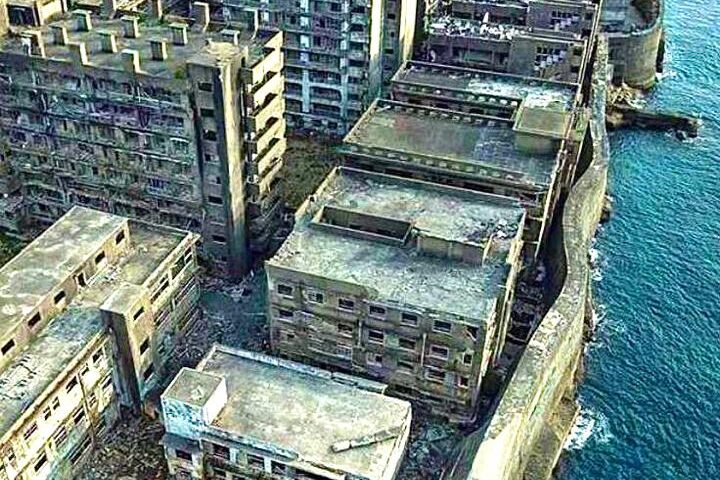
Hashima, once a bustling coal mining island, now sits eerily silent off the coast of Japan. When the mines closed in the 1970s, everyone left, and the island’s concrete buildings began to crumble. Ivy snakes up walls, and the sea breeze brings salty air that helps moss and small trees thrive in every crack. The once-crowded apartments and factories are now silent, except for the sound of wind and the calls of seabirds, proving that even the hardest concrete can’t keep nature out forever. Source: web.facebook.com
3. Kolmanskop, Namibia
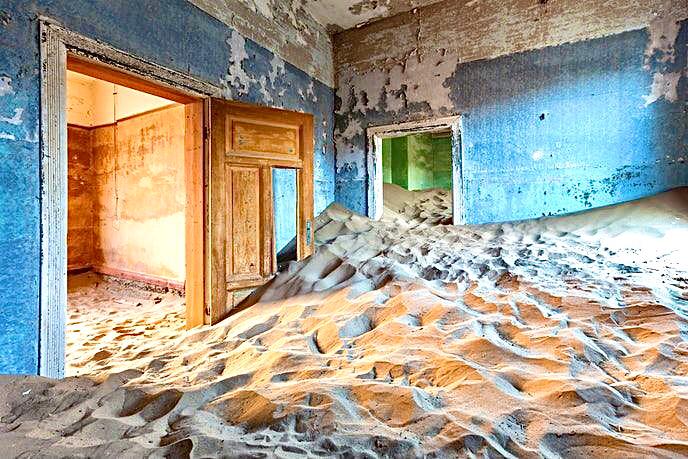
Kolmanskop was a diamond mining town in the Namib Desert, but when the diamonds ran out, so did the people. Now, sand drifts through the empty houses, filling rooms up to the windowsills. The desert’s slow, steady advance has turned this former boomtown into a surreal landscape where doors open to dunes and sunlight dances on sand-covered floors. It’s a reminder that the desert always reclaims what’s hers, grain by grain. Source: 2summers.net
4. Centralia, Pennsylvania, USA
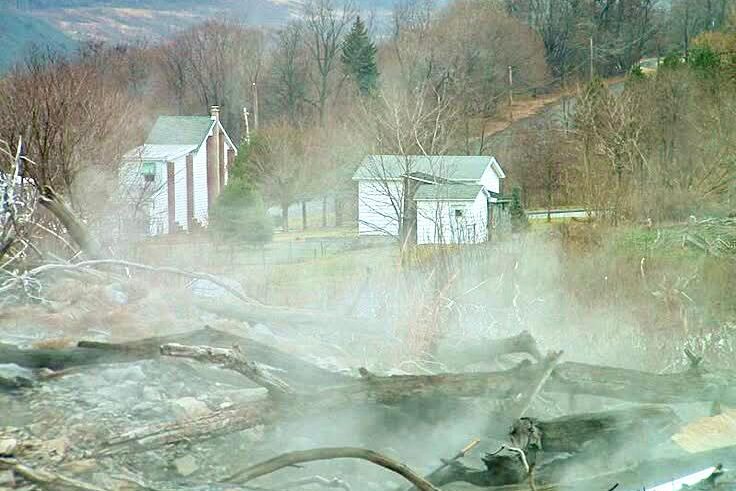
Centralia’s story is one of fire and resilience. An underground coal fire has been burning beneath the town since 1962, forcing residents to leave as smoke and sinkholes made life impossible. With people gone, trees and shrubs have taken root in the cracked streets, and wildflowers bloom where houses once stood. The ever-present haze gives the town an otherworldly feel, as if nature is quietly healing the scars left by fire. Source: en.wikipedia.org
5. Angkor, Cambodia

Angkor was once the heart of a mighty empire, but centuries of neglect allowed the jungle to swallow its temples. Giant trees, their roots like tentacles, wrap around ancient stone walls, while moss and ferns grow in every nook. The ruins are now part of the forest, with monkeys and birds making their homes where kings once walked. Angkor’s beauty lies in this blend of human achievement and nature’s unstoppable force. Source: smithsonianmag.com
6. Craco, Italy
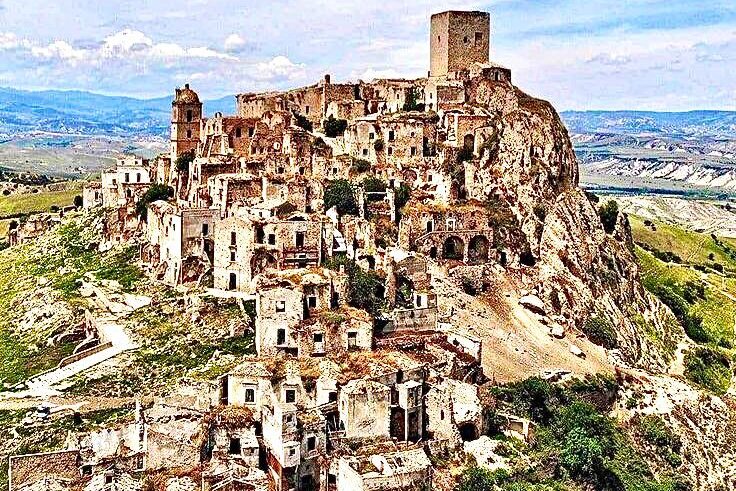
Perched on a hilltop, Craco’s stone houses and towers look out over the Italian countryside. But landslides and earthquakes made the town unsafe, and by the 1960s, most residents had left. Now, wildflowers burst from the cracks in the stone, and grasses sway in the empty squares. The silence is broken only by the breeze and the occasional bird, as nature gently reclaims this once-bustling village.
7. Oradour-sur-Glane, France
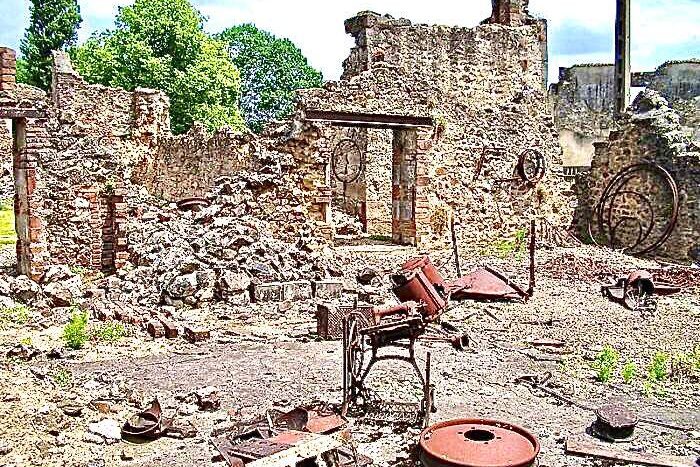
Oradour-sur-Glane stands as a memorial to tragedy, left untouched since World War II. Over the years, grass has crept across the streets, and flowers bloom where shops and homes once stood. Trees shade the rusting cars, bicycles, and crumbled houses. The quiet is profound. Nature’s slow embrace here is a symbol of both remembrance and renewal, as life quietly returns to a place marked by sorrow.
8. Plymouth, Montserrat
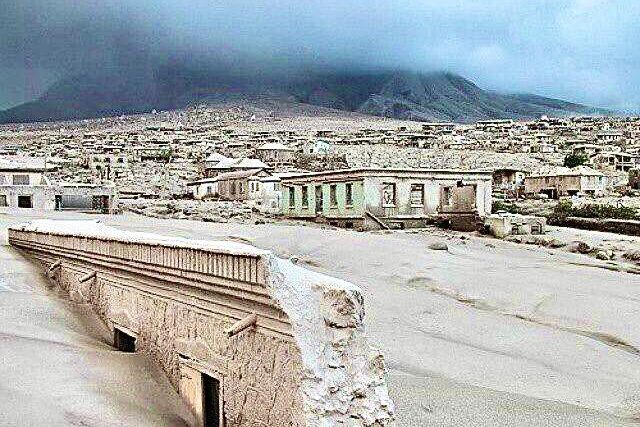
Plymouth was the capital of Montserrat until a volcanic eruption in 1995 buried much of it in ash. The gray blanket of volcanic dust created a ghostly landscape, but over time, green shoots have pushed through the ash. Trees and shrubs now cover the ruins, and birds nest in the abandoned buildings. The city’s transformation shows how life finds a way, even after disaster.
9. Varosha, Cyprus

Once a glamorous beach resort, Varosha was abandoned in 1974 during conflict. For decades, it was off-limits, and nature took full advantage. Palm trees sway in the breeze, grasses grow through the hotel floors, and the sound of the sea is the only reminder of the city’s former life. The slow but steady return of wildlife and greenery gives Varosha a bittersweet beauty.
10. Houtouwan, China

On Shengshan Island, Houtouwan was left behind as residents sought better opportunities elsewhere. Today, the village is almost invisible beneath a thick blanket of ivy and vines. The green waves roll over rooftops and spill through windows, turning houses into living sculptures. Birds, insects, and small animals have moved in, and the village feels more like a forest than a place people once lived. In all these places, nature’s patience and persistence shine through. Whether it’s a jungle wrapping ancient stones or wildflowers pushing up through city streets, these cities remind us that when we step aside, the earth quietly and beautifully, takes back its own.
If these hauntingly beautiful places where nature has reclaimed entire cities sparked your sense of wonder, why not share this list with a fellow explorer or dreamer? Or drop your thoughts or share your favorite forgotten city in the comments below. Let’s keep the conversation going.


